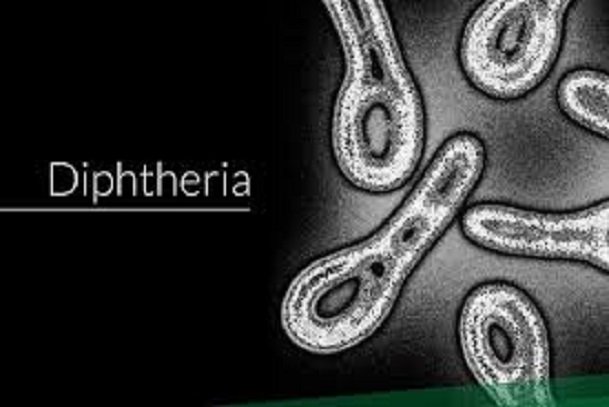 Wash your hands regularly and wear a face mask.
Learn more
Wash your hands regularly and wear a face mask.
Learn more

Status of Diphtheria
The Nigerian government through the Nigeria Center for Disease Control and Prevention (NCDC), the country’s national public health institute that has been saddled with the responsibility of coordinating and leading emergency preparedness and response to public health concerns due to communicable disease, has recently been responding to the outbreaks of diphtheria. They have constantly been responding to and monitoring the disease’s outbreak in some parts of the country.
According to this institute – NCDC, between 1st December 2022 and March 5, 2023, when the last report was made, 1,064 suspected cases, 389 confirmed cases, and 62 deaths were recorded from 21 states and 74 LGA(s). In these reports, six (6) states were mainly affected (96.2%), with 843 suspected cases from Kano State (377 confirmed cases, and 56 deaths), Lagos State (22 suspected cases, 7 confirmed cases, and 5 deaths), Sokoto State (14 Suspected cases, 0 confirmed case, and 0 death), Katsina State (46 suspected cases, 1 confirmed case, and 1 death), Zamfara State (13 suspected cases, 0 confirmed case, 0 death), and Yobe State (86 suspected cases, 2 confirmed cases, and 0 death).
Other states include:
The predominantly affected age group is between 2 – 14 years (305 confirmed cases) thus showing that children were the majorly affected persons Only 60 out of the 389 diphtheria-confirmed cases were fully vaccinated with a diphtheria toxin-containing vaccine. No healthcare workers were reported to have contracted the disease from ailing persons.
In partnership with State Ministries of Health, the Nigeria Centre for Disease Control and Prevention (NCDC) initiated an emergency response to the outbreak and is monitoring the situation in these five states (Lagos, Kano, Sokoto, Katsina, Zamfara, and Yobe).
What is Diphtheria?
Diphtheria is a highly contagious infectious disease that is caused by the bacterium Corynebacterium diphtheria. Although quite uncommon in developed countries, yet common in this part of the world. It is a disease that affects the mucous membranes of the throat and nose.
When a person catches diphtheria, the bacteria release toxins or poison into the person’s body. toxin infects the upper airways and sometimes the skin, causing a membrane to grow across the windpipe. People with diphtheria do have serious breathing and swallowing problems and may develop sores on their skin.
Globally, the incidence of diphtheria has reduced positively in the past five decades, thanks to widespread immunization, using a diphtheria toxoid-containing vaccine.
The number of diphtheria cases reported to the World Health Organization (WHO) declined from about 100,000 in 1980 to less than 10,000 cases in 2021.
How Diphtheria Is Contracted and Managed
Diphtheria is usually contracted through person-to-person direct contact, the air, and respiratory droplets from sneezing or coughing. It can also be spread to an uninfected person through contact with contaminated clothing and objects (a person can be infectious as long as the bacteria is present in any of the respiratory organs). In some rare cases, chronic carriers of diphtheria can keep shedding the organisms for six months or more, but effective and swift treatment can terminate the shedding in a day or two.
Also, according to the NCDC, diphtheria can be transmitted by sharing items such as cups, cutlery, clothing, or bedding with an infected person. It is possible to get diphtheria more than once. Diphtheria affects only children who have not been immunized against the bacteria.
Symptoms of diphtheria include swollen glands in the neck; a thick, gray membrane covering the throat and tonsils; rapid or difficulty breathing; nasal discharge; tiredness; fever, and chills. This usually begins 2 to 5 days after a person becomes infected. The exotoxin produced by the bacteria may also enter the bloodstream causing complications such as inflammation and damage of the heart muscle, inflammation of nerves, kidney problems, and bleeding problems due to decreased blood platelet count.
Diagnosing diphtheria is done by taking a sample from the back of the throat or sore using a swab, then taken to a laboratory. Although laboratory investigation of suspected cases is recommended for case confirmation, treatment should be started immediately before laboratory results are received.
Vaccines against diphtheria have been successful in the eradication of the disease in most developed countries, this is why it is important to get children vaccinated against diphtheria when due. Also, another form of treatment includes medications such as antibiotics (against the diphtheria bacteria), medicines to stop the effects of the toxins produced by the bacteria, and also thorough cleaning of any infected wound caused by diphtheria.
In preventing diphtheria in Nigeria, childhood immunization is very important with three doses of pentavalent vaccine (diphtheria toxoid-containing vaccine) being recommended at the 6th, 10th, and 14th week of life.
The World Health Organization (WHO) recommends a three-dose series of diphtheria toxoid-containing vaccines in the first year of life beginning at 6 weeks of age and advises that 3 booster doses of diphtheria toxoid-containing vaccine are provided during childhood and adolescence to ensure long-term protection.
In diphtheria endemic outbreaks, healthcare workers may be at greater risk of diphtheria, thus, special attention should be paid to immunizing healthcare workers who may have occupational exposure to Corynebacterium diphtheriae.